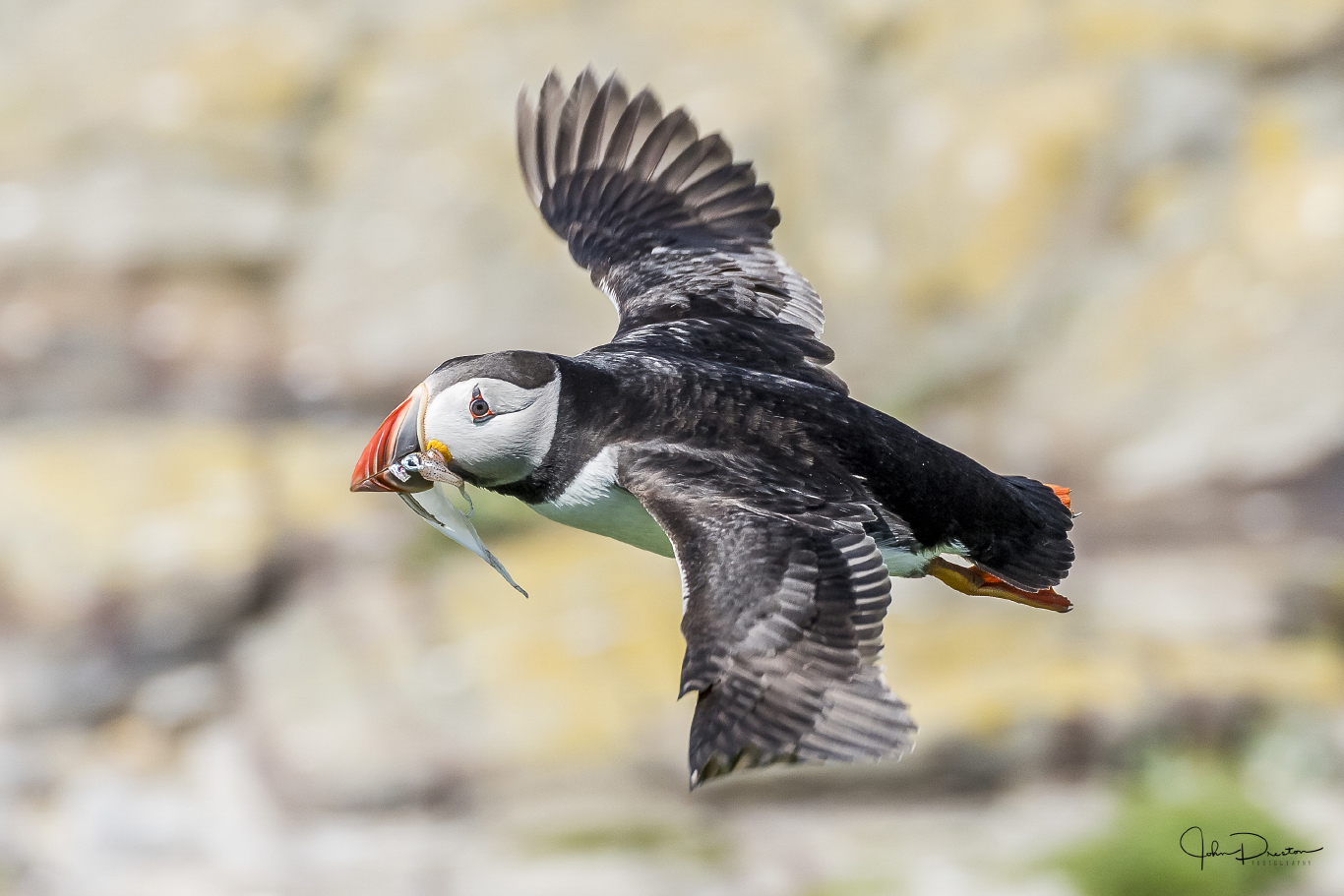First steps taken to tackle Puffin decline
Project Puffin, a new RSPB initiative, has taken the first steps in explaining why some British Puffin colonies in are in dramatic decline. Scientists analysed more than 1,400 photos sent in by the public, helping them to build a better picture of what these seabirds are feeding their chicks
Britain’s coastlines come alive each spring with the sight, sound and smell of Puffins nesting and raising their young, known as ‘pufflings’. With their bright orange bills and distinctive eye markings, Puffins are hugely popular with birders and the general public alike, and hot-spots in Britain and Ireland attract visitors from all over the world to photograph these bustling colonies. However, in recent years the species’ numbers have plummeted in some areas, and experts estimate that without help more than half the global Puffin population will disappear within the next 40 years.

A Puffin enters its burrow at Noss NNR on Bressay, Shetland (Oliver Prince/RSPB).
This summer RSPB scientists set out to understand more about the differing fortunes of Puffins around our coasts. They launched Project Puffin, which aimed to provide a snapshot of what the birds are feeding their young at as many colonies as possible, as it is thought that the food supply has been negatively impacted by warming seas and shifting ocean currents. By enlisting the help of the public, 1,402 photos of Puffins bringing food to their chicks were sent to the team.
The photos have helped scientists identify areas where the auks are struggling to find the larger, more nutritious fish needed to support their chicks. Early results suggest that the diet of Puffins vary significantly around Britain. In Orkney and Shetland, where serious Puffin declines have been seen, the birds appear to be consistently finding smaller prey compared to most other colonies.
Traditionally Puffins feed on a mixture of fish, but with nutritious sand-eels making up a high proportion of their diet. The photos from colonies in north-west Scotland show that sand-eels are now making up about half of their diet compared to the two-thirds at colonies in southern Scotland, northern England and Wales.

A Puffin takes sand-eels to its nest on the Farne Islands, Northumberland (John Preston/RSPB).
Ellie Owen, an RSPB Conservation Scientist who leads the Project Puffin team, said: “The huge response to our appeal for photos has been incredible, with more than a thousand submitted. It’s taken the team of staff and volunteers more than three months to go through them all.
“For a young Puffin waiting in its burrow, its life hangs on whether its parents return with enough food. An abundant supply of large, nutritious fish such as sand-eels, sprats and herrings is key to healthy colonies. The public response means we’re getting data on a scale that we’ve never been able to collect before, showing what Puffins are managing to find to feed their chicks around our coastline. The next stage of the project is to look more closely at the diet of Puffins compared to their breeding success to pin down what part diet plays in [their] decline.”
From May to August, 602 people supplied 1,402 photos of Puffins taking food to their chicks. Pictures came from almost 40 colonies around Britain, including those on the Farne Islands, Skomer and the Isle of May. The project is supported by Heritage Lottery Fund Scotland thanks to money raised by National Lottery players. To see more photos and to learn about the RSPB’s Project Puffin, visit www.rspb.org.uk/projectpuffin.
“I was on holiday in Shetland with my husband, arranged by a local guide. We’d gone to Sumburgh Head RSPB to see and photograph the Puffins. I'd sat down for a bit and taken my phone out to get a video of them coming into land when this little one decided to come through the fence. I couldn’t believe my luck and as I had my phone in my hand I started to film. I was amazed when he popped under my leg!” ViralHog (YouTube user).

